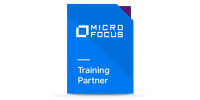Dodatkowe informacje
| Wymagania wstępne | To be successful in this course, you should have the following prerequisites or knowledge:
|
|---|---|
| Poziom trudności | |
| Czas trwania | 5 dni |
| Certyfikat | The participants will obtain certificates signed by Micro Focus (course completion). This course prepares you also for such related Micro Focus certification exam: SM320 - Service Manager 9.5 ASE Exam. |
| Prowadzący | Authorized Micro Focus Trainer. |
Pozostałe szkolenia Micro Focus | Service and Portfolio Management
-

CMS350 - Configuration Management System Advanced szkolenie Micro Focus
-

PD370 - Using and Configuring Process Designer szkolenie Micro Focus
-

SBM200-SBM Designer & Administrator szkolenie Micro Focus
-

SBM300-SBM Advanced Designer szkolenie Micro Focus
-

SBM400-SBM Orchestration & Scripting szkolenie Micro Focus
-

SM110 - Service Manager Foundations for Process Owners szkolenie Micro Focus
-

SM150 - Service Manager Technical Configuration szkolenie Micro Focus
-

SM350 - Service Manager Advanced szkolenie Micro Focus
-

SMAN300 - Using and Configuring Smart Analytics szkolenie Micro Focus
-

UCMDB120 - Universal CMDB Essentials szkolenie Micro Focus
CENA SZKOLENIA OD 9275 PLN NETTO
W celu zaproponowania terminu dla tego szkolenia prosimy o kontakt z Działem Handlowym

